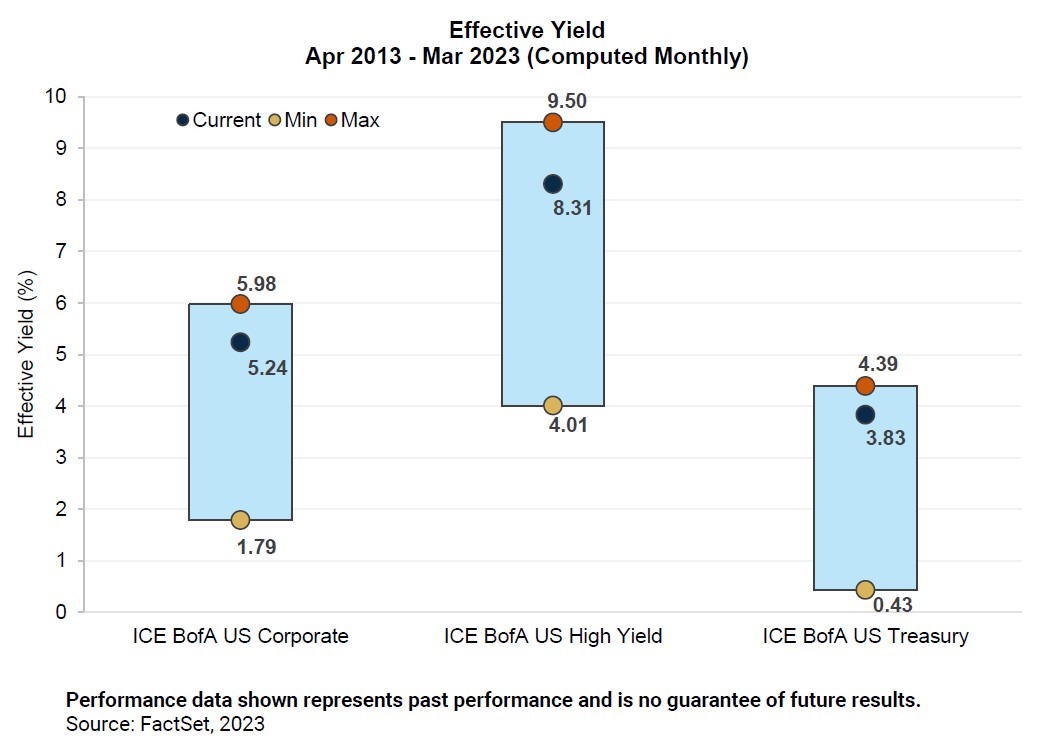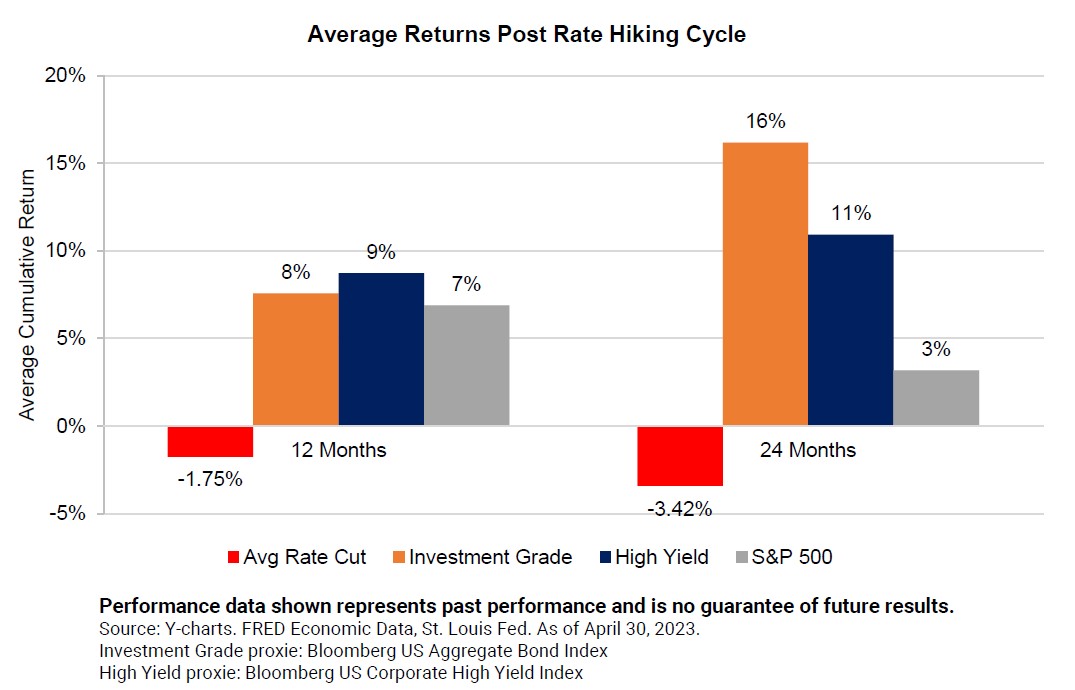Now May Be The Time To Revisit Your Portfolio’s Bond Allocation
May 26, 2023
We believe many bond investors have grown accustomed to favorable conditions over an extended period of low and falling interest rates. Additionally, bond investors may have been shaken by the volatility seen in fixed-income markets over the past several months. Bond returns have faced extreme pressures amid tightening Fed policy, a banking crisis, inflation fears, and recent performance may have caused some investors to turn cautious on bonds. However, we believe that headwinds may soon abate, and now could be an opportune time to add to your portfolio’s bond allocation.
We consider that the Fed’s tightening cycle has been a key contributor to the high levels of volatility experienced over the past year, but it also has brought about the opportunity to take advantage of higher interest rates. Due to the recent rate hikes, bond yields have come off the very low levels hit back in 2020 and are currently trending near their highest levels over the past decade.

Higher rates may bring a couple of advantages. First, long-term bond investors could benefit from higher reinvestment rates. In addition, because the bulk of a bond returns come from the interest payout, coupon income typically more than offsets negative price return when rates rise. Thus, today’s higher income payouts provide a cushion to help mitigate further downside price risks.
Second, we believe that the Fed may be near the end of its tightening cycle, which has historically set up favorable conditions for bond investors. After the last three Fed rate hiking cycles (2000, 2006, 2018), rates were cut on average 1.75% over the following 12 months and 3.42% over 24 months. As seen in the chart below, investors in fixed income have been rewarded during these periods, while U.S. equities have lagged. If the future unfolds in a similar fashion, the environment may welcome bonds in the coming months. Now may be a good time for investors to revisit their bond allocations with an eye toward a future that could be more promising than the recent past.

Important Information
The views expressed herein may not be reflective of current opinions, are subject to change without prior notice, and should not be considered investment advice or a recommendation to purchase or sell a particular security.
All investments involve risk including the possible loss of principal. Stock prices can fall because of weakness in the broad market, a particular industry, or specific holdings. Bonds may decline in response to rising interest rates, a credit rating downgrade or failure of the issue to make timely payments of interest or principal.
ICE BofA US Corporate Index tracks the performance of US dollar denominated investment grade rated corporate debt publicly issued in the US domestic market. Index is unmanaged and does not reflect fees and expenses and are not available for direct investment.
The ICE BofAML US High Yield Index (H0A0) is an unmanaged index that tracks the performance of below investment grade U.S. Dollar-denominated corporate bonds publicly issued in the U.S. domestic market. All bonds are U.S. Dollar-denominated and rated Split BBB and below. These unmanaged indices do not reflect fees and expenses and are not available for direct investment.
The ICE BofA 3-6 Month U.S. Treasury Index measures the performance of U.S. dollar denominated U.S. Treasury Bills publicly issued in the U.S. domestic market with a remaining term to final maturity greater than or equal to 3 months and less than 6 months. This unmanaged index does not reflect fees and expenses and is not available for direct investment.
The S&P 500 Index is an unmanaged index generally representative of the U.S. market for large capitalization equities. This unmanaged index does not reflect fees and expenses and is not available for direct investment.
The Bloomberg US Aggregate Bond Index is an unmanaged index of investment-grade fixed-rate debt issues with maturities of at least one year. This unmanaged index does not reflect fees and expenses and is not available for direct investment.
The Bloomberg US Corporate High Yield Index covers performance for United States high yield corporate bonds. The index serves as a benchmark for portfolios that include exposure to riskier corporate bonds that might not necessarily be investment grade. This unmanaged index does not reflect fees and expenses and is not available for direct investment.
Effective yield is the yield for securities with redemption options, representing the total yield an investor receives.
Investing entails risks and there can be no assurance that any investment will achieve profits or avoid incurring losses.
2939396
